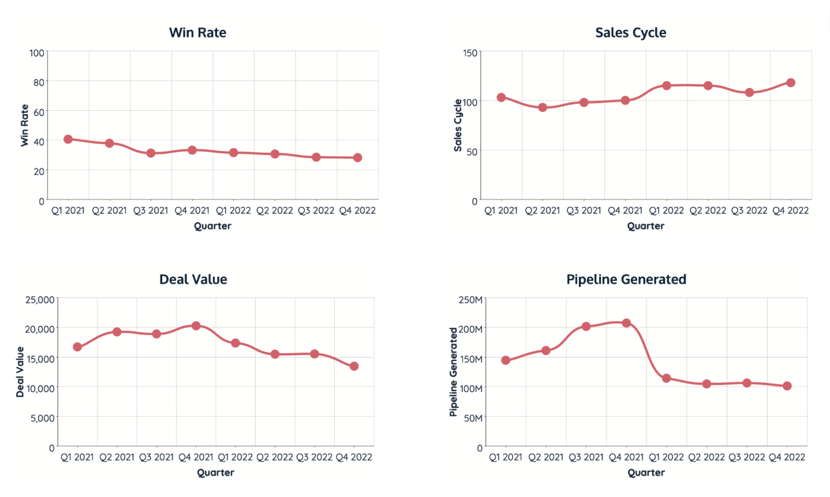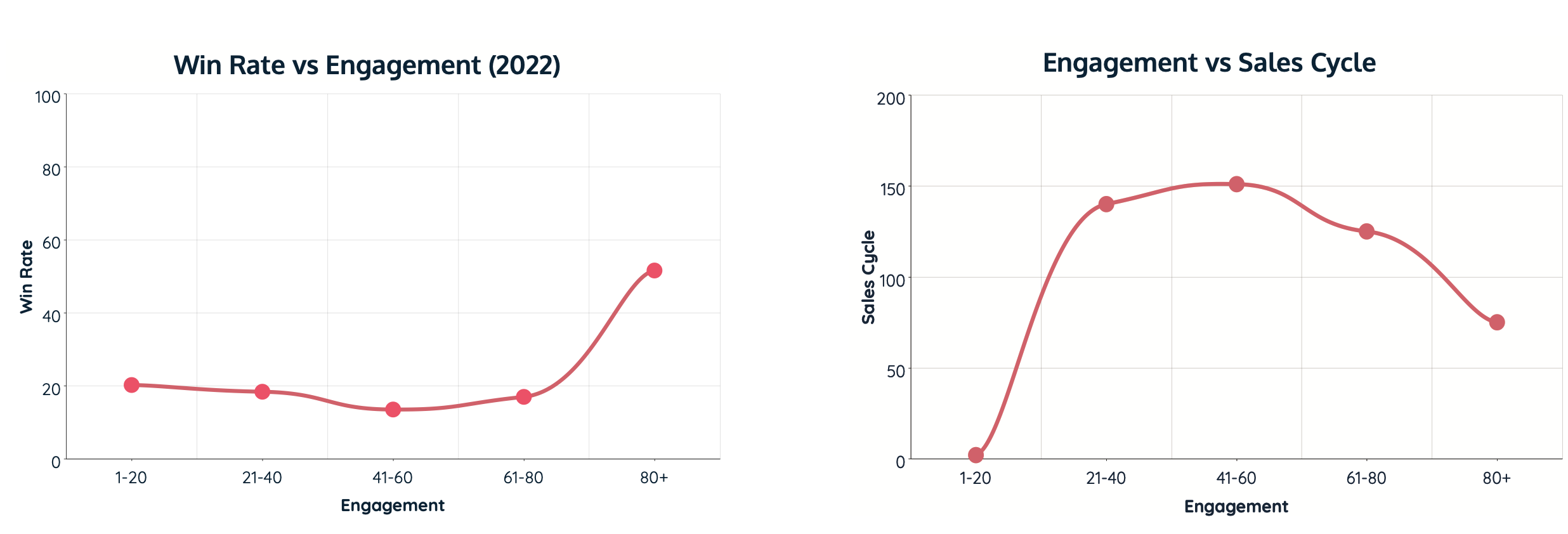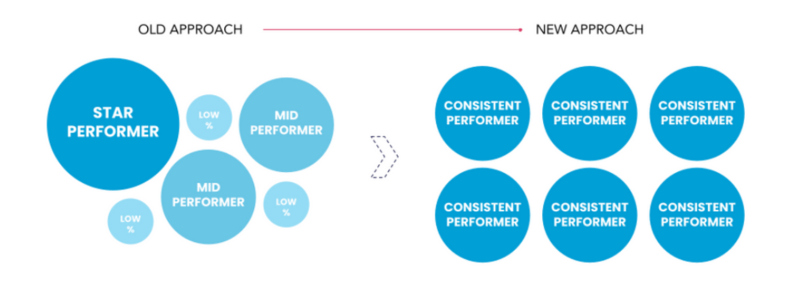


5 Steps to Replicate Sales Excellence (Part 1)




We recently teamed up with HubSpot to discuss the challenges facing sales teams in today's competitive landscape in our webinar 5 Steps to Replicate Sales Excellence. In this webinar, Richard Wood (CEO, Six & Flow) and Alex Rainford (Product Marketing, HubSpot) explore how prospects are now harder to reach, budgets are tightening, and sales cycles are lengthening.
In this blog, we'll share a detailed overview of what went down in the webinar while digging deeper into the concepts discussed to overcome sales challenges, consequently helping you develop an efficient team of consistent performers and boost revenue growth.
The $2 Trillion Sales Problem
The webinar began by outlining some of the main problems faced by sales teams today. In a poll conducted during the webinar, we asked participants what are the major problems they encountered during sales cycles, we learnt that some of the main issues included deal slippage, remote prospecting, lead qualification, hitting targets, and lack of efficiency.
We clubbed these challenges into four key points due to which sales is facing major headwinds:
Challenges in Prospect Reach:
1. Remote Challenge
With the rise of remote work, reaching prospects through traditional means like cold calling has become more challenging. Many people are no longer sitting at their office desks where they might have been more receptive to such calls.
2. Channel Saturation
Social media platforms, particularly LinkedIn, have seen an influx of sales and marketing outreach. This has led to a saturation of messages, making it harder for sales professionals to stand out. Many prospects are now skilled at ignoring unsolicited outreach.
3. Lazy Sales Messaging
Some sales professionals have fallen into the trap of using generic, templated outreach messages. This lack of personalization and value in their messaging can cause prospects to disengage, as they perceive the communication as spammy.
Lower Performance in 2023
The tech and SaaS sectors experienced a surge in growth during the COVID-19 pandemic as businesses adapted to remote work and digital solutions. However, as the world returns to a more normal state, the rapid growth has slowed down, making hitting forecasts and quotas much more unpredictable and difficult across quarters. This can lead to lower-than-expected performance in 2023, as the market adjusts to a new baseline.
A research conducted in 2022 showed sales velocity peaking in 2021 Q4 as the market experienced a strong recovery from Covid-19 (Ebsta, B2B Sales Benchmark Report). But the boom period didn't last long as we noticed a substantial drop in pipeline generation (-47% QoQ) during Q1 2022. Even though reps faced a minor dip of 3% in the average number of opportunities, they suffered massive decrease in average deal value (-32% YoY) and win rates (-15% YoY) along with their sales cycles becoming longer (+32% YoY).

Inconsistent Goal Achievement
Sales reps and managers may still achieve occasional big wins, but achieving consistent, month-to-month sales targets has become more challenging. This inconsistency could be due to a combination of factors, including market fluctuations, changing prospect behaviour, and sales team dynamics.
Stagnant Budgets
Many organizations have either reduced its budgets or maintained them at the same level, which can be a challenge for sales teams as it limits resource availability. Stagnant or shrinking budgets indicate that financial resources are being allocated more cautiously, making it more difficult for sales professionals to close deals and secure resources.
And that is the $2 Trillion Sales Problem! Businesses tend to continue pursue these inefficient sales processes instead of taking a step back to re-evaluate and solve these challenges.
When push comes to shove, sales leaders resort to the classic "do more" mentality hoping that it'll help them achieve their targets and improve team performance.
More calls. More emails. More B2B sales reps.
Which is a BIG mistake!
In essence, not all businesses can afford to adopt this strategy, and moreover, it is no longer effective in the contemporary business landscape where the emphasis has transitioned from quantity to quality.
Moreover, pushing for higher call and email quotas without a focus on quality can lead to inefficiency and burnout among sales representatives. This can result in disengaged, demotivated teams and higher turnover rates.
During such times, it becomes important to focus on building and nurturing meaningful, trust-based relationships.
Embracing the Art of Relationship-Building
When you strip back all of the systems, the content, and the tech, sales and business boils down to relationships. Successful sales teams are recognizing that the key to a more efficient and fruitful sales process lies in nurturing relationships.
In the past, sales relied on brute force activities, bombarding prospects with calls and generic emails. Modern sales requires a strategic and tailored approach, using the right channels, crafting personalized messages, and timing outreach perfectly. Successful teams connect with stakeholders to understand their true needs and challenges, building trust and credibility for more successful deals and long-term partnerships.
According to Ebsta's B2B Benchmark Report, keeping clients engaged through consistent and high quality nurturing helped b2b sales reps improve their performance substantially. In fact, the report reveals an astounding 340% improvement in win rates and a staggering 40% reduction in the sales cycle duration. These impressive statistics highlight the immense power of nurturing relationships and the direct impact it can have on sales velocity.

Building strong relationships is the backbone of success in sales and business. Nurturing these relationships not only increases conversion rates but also promotes customer loyalty and brand advocacy. In today's competitive landscape, businesses that invest in relationships have a competitive edge.
Consistent Team Performance > Few High Performers' Wins
It's easy to become fixated on high-performing sales superstars who consistently deliver exceptional results. While these top performers are undoubtedly valuable assets to your team, relying solely on them to achieve revenue targets is not sustainable.

Leveraging High Performers for Team Growth
High-performing individuals in your sales team have honed their skills and strategies over time, making them a valuable source of knowledge and inspiration. Analysing their tactics and utilising coaching tools allows you to share their successful methods with the entire team, improving overall performance.
The Three Tiers of Sales Performers
Every sales team is comprised of high, mid, and low performers. The high performers are the rock stars, consistently meeting or exceeding their targets. The mid-level performers show some consistency but may experience fluctuations in their performance. The low performers are those who struggle to meet their quotas.
The real challenge lies in transforming all these performers into consistent contributors who meet their targets quarter after quarter. Achieving this requires a systematic approach based on learning from what's working and what's not.
Building Consistency Through Process, Technology, and Insights
Consistency in sales performance relies on well-defined processes, technology, and data utilization. Implementing standardised processes, automation tools, and data-driven insights enables all team members to perform at a higher level and contribute to overall success.
The Power of Transformation
Transforming low and mid-level performers into high performers is a long-term investment that involves identifying areas for improvement, providing targeted coaching and training, and continuously monitoring progress. This sustainable approach builds a strong and consistent sales team, benefiting performance, morale, job satisfaction, and overall motivation.
Who Will Drive Sales Excellence?
Setting up a successful Revenue Operations (RevOps) framework is a collaborative effort that involves various key players in your organization. Each role plays a critical part in achieving success in revenue generation:
Sales Leader
A data-driven sales leader is pivotal in optimizing sales performance. They set the strategic direction for revenue generation, working closely with senior marketer.
Their contribution in replicating sales excellence includes: defining the revenue strategy, setting goals, and overseeing the overall performance to ensure that all teams are aligned on a common goal.
Sales Manager
Sales managers empower and coach the sales team, using data and insights to guide their coaching. They also advocate for the sales team and work to remove obstacles that hinder sales reps from closing deals.By providing coaching, insights, and support to the sales team, and ensuring that they have the tools and knowledge needed to excel in their roles they help set the tone for a successful sales process.
Sales Reps
Sales reps are on the front lines, executing sales processes. They should leverage data to continuously improve their sales processes while providing which are extremely valuable for the entire team, especially marketers.
Marketer
The marketing team should be intrinsically aligned with sales and work collaboratively to enable the sales team with opportunities that drive revenue growth.
Marketers are instrumental in generating and nurturing leads, collaborating with the sales team to deliver qualified leads, and tracking marketing activities to ensure they contribute to revenue growth.
For RevOps to work effectively, it's essential that these key players work together cohesively. They must share a common goal of driving revenue growth and ensuring that the sales process is optimised, data-driven, and aligned with the overall business objectives. The success of RevOps hinges on the collaboration and synergy of these roles within your organisation.
In a landscape where the challenges facing sales teams are as formidable as the opportunities, our webinar with HubSpot shed light on the $2 trillion Sales Problem, emphasising the need for a fundamental shift in strategy. With the increasing difficulty in reaching prospects, fluctuating performance post pandemic, inconsistent goal achievement, and stagnant budgets, it's clear that traditional "do more" tactics won't suffice. The contemporary business world demands a transition from quantity to quality, putting a premium on relationship-building. Nurturing meaningful, trust-based connections is the cornerstone of success, enabling not only higher conversion rates but also fostering customer loyalty and brand advocacy. While high-performing individuals are assets, the true challenge lies in transforming all team members into consistent contributors.
In part 2 of this webinar recap, we get down to business and spill the 5 steps to drive sales velocity and achieve revenue growth with a team of consistent performers.



Watch the On-Demand Webinar
5 Steps to Replicate Sales Excellence
Together, we'll create a strategic plan to allow you to experience increased revenue, and foster stronger customer relationships, with a team of consistent performers.




